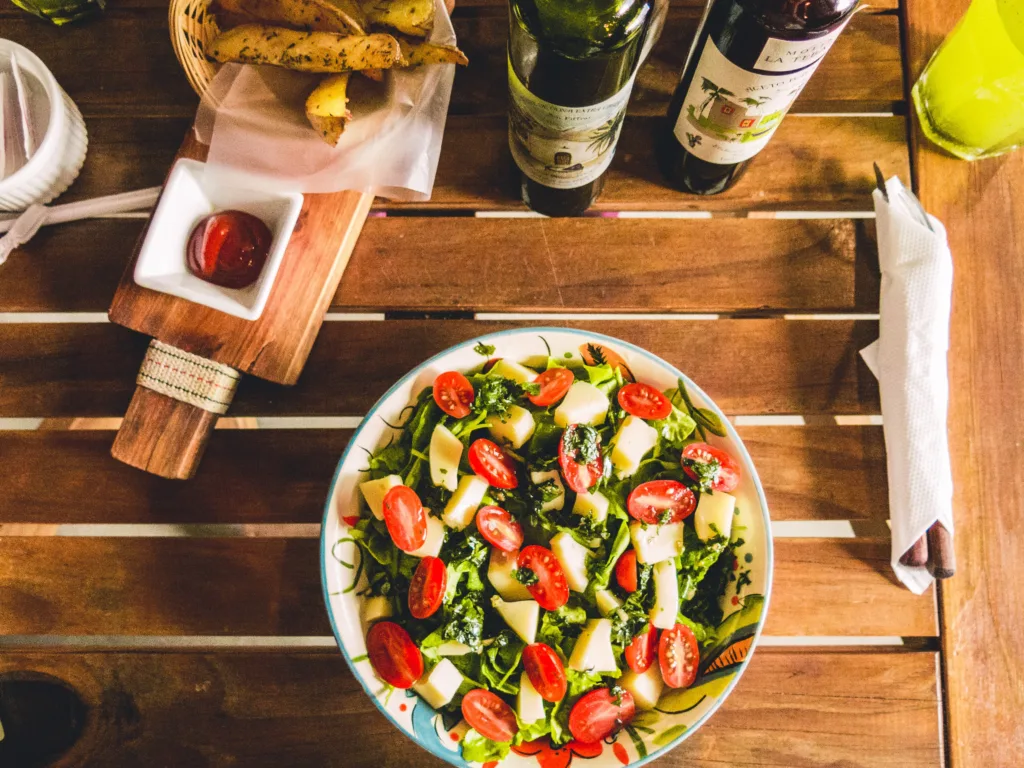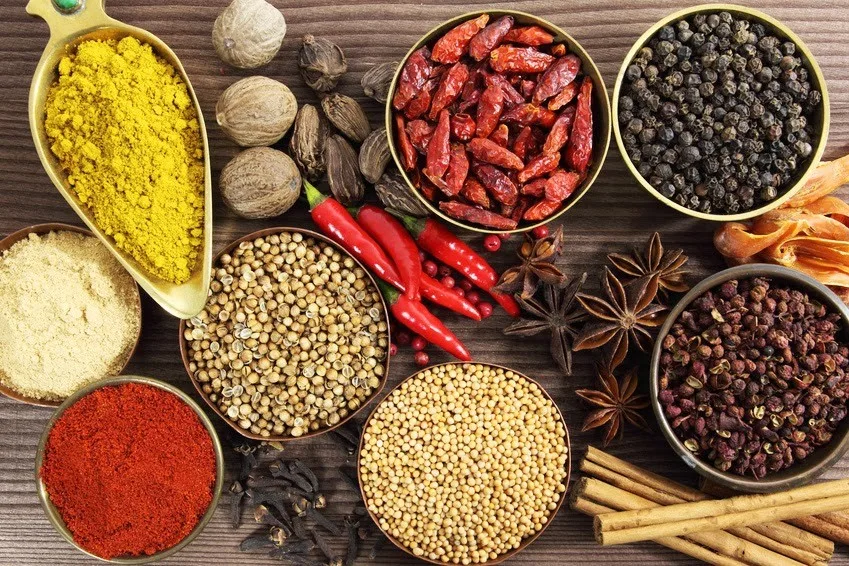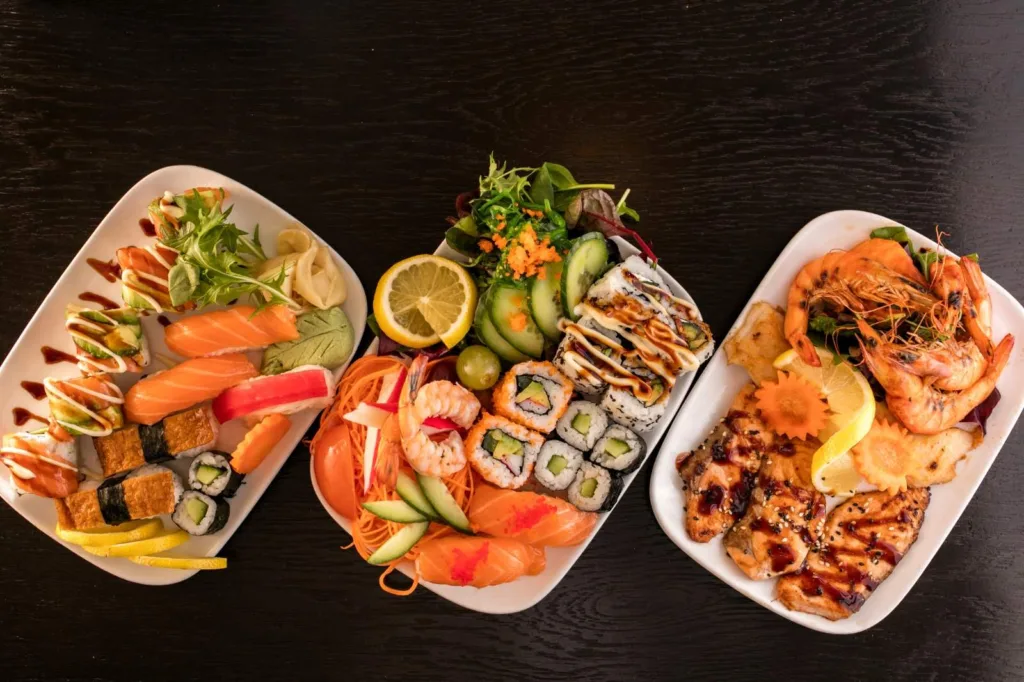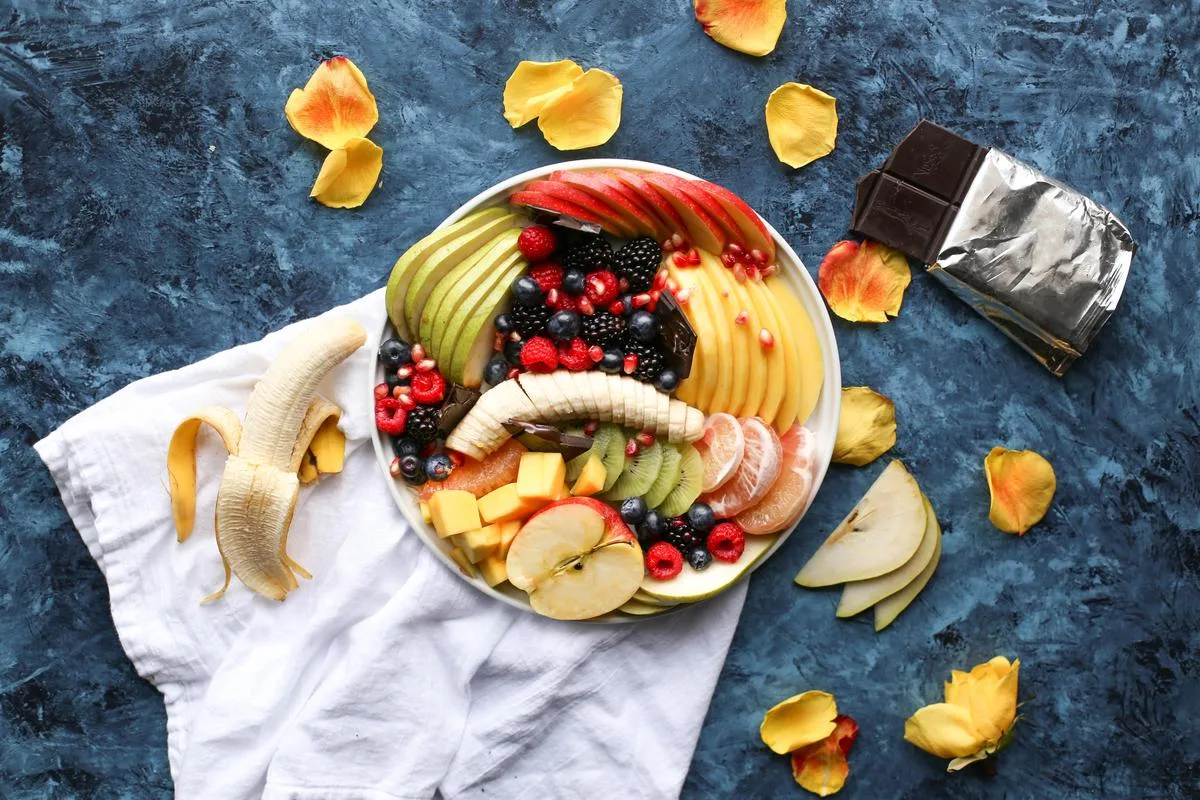Eating well is one of life’s greatest pleasures. However, when you’re trying to lose weight, it can feel like you need to give up all your favorite foods. The truth is, you can still enjoy delicious meals from around the world and reach your weight loss goals. The key is focusing on dishes that offer nutrition without going overboard on calories. Join me on a culinary journey as we explore global cuisines and discover how to make healthy, satisfying meals. This voyage will be filled with flavor, adventure and plenty of slimming secrets to help you look and feel your best!
Setting the Stage
When it comes to losing weight, what you eat matters. The foods you choose impact your body composition, energy levels, and overall health. While no one wants to feel deprived, cutting calories doesn’t mean living off salads and plain chicken breast. With an open mind and a dash of creativity, you can craft flavorful meals that nurture your body and taste buds.
In this post, we’ll dive deep into some of the most delicious and nutritious cuisines worldwide. You’ll uncover key ingredients, cooking techniques, and tips for constructing healthy, well-balanced plates. We’ll also share specific recipes and meal ideas to inspire your own culinary adventures. Let’s prove that healthy plates can also be hearty and mouthwatering. Are you ready to begin an exciting voyage of culinary delight and weight loss success? Let’s explore the possibilities!

The Mediterranean Marvel
First stop on our tasty tour is the Mediterranean. This region’s cuisine relies on simple, high quality ingredients like olive oil, fish, lean meats, whole grains, vegetables, herbs, and spices. Studies consistently link the Mediterranean diet with improved health from weight management to chronic disease prevention. So what’s their slimming secret?
This style of eating emphasizes plant-based foods with smaller amounts of animal protein. Meals often start with salads and focus on veggies, beans, lentils and whole grains. These ingredients offer ample fiber to promote satiety so you feel full and satisfied. The Mediterranean diet also highlights heart-healthy fats from olive oil, nuts and fatty fish. These nourishing fats help you feel satisfied on fewer calories compared to meals laden with saturated fat.
When cooking Mediterranean-inspired dishes, opt for quick prep methods like grilling, roasting or sautéing in olive oil. You’ll boost flavor without adding excess calories. Spinach and chickpea stew, lemony grilled chicken or salmon over quinoa, and refreshing quinoa tabbouleh make perfectly balanced Mediterranean-style meals. For dessert, fresh fruit drizzled with a touch of honey hits the sweet spot after a Mediterranean feast.
Here’s a delicious recipe for Mediterranean Baked Cod that incorporates the fresh flavors of this cuisine:
Mediterranean Baked Cod
Ingredients:
- 1 pound cod fillet
- 1 pint cherry tomatoes
- 1 lemon, sliced
- 1⁄4 cup kalamata olives
- 2 tablespoons olive oil
- 1 teaspoon dried oregano
- 1⁄4 teaspoon paprika
- Salt and pepper to taste
Instructions:
- Preheat oven to 400°F.
- Pat cod dry and place in baking dish. Arrange tomatoes and lemon slices around fish.
- In small bowl, combine olive oil, oregano, paprika, salt and pepper. Drizzle over cod.
- Bake for 12-15 minutes until fish flakes easily with a fork.
- Top with olives and enjoy!
This simple baked cod is Mediterranean diet-approved. By relying on lean protein, tomatoes, olive oil and herbs for flavor, you can enjoy a light, nutrition-packed meal under 400 calories!

Asian Delights
Our next stop is Asia, where many countries offer cuisine focusing on vegetables, lean proteins and flavorful spices. With a rainbow of produce as the base, Asian dishes often utilize healthier cooking techniques like steaming, boiling and quick stir frying.
Rice and noodles do play a large role across Asia. To keep these grain-based dishes figure-friendly, watch your portion sizes. Stick to a quarter to a half cup of rice or noodles and load up on low-cal veggies instead. Another tip is to swap refined grains for brown rice or brown rice noodles to increase fiber for satiety.
Don’t be afraid to enhance Asian dishes with lower-sodium sauces and spice pastes. Options like ginger, garlic, chili, lime, rice vinegar and reduced-sodium soy sauce amp up flavors without excess sodium or calories. Experiment with Thai basil chicken over riced cauliflower, vegetable fried quinoa instead of rice, or fresh spring rolls made with lettuce wraps instead of doughy skins. The possibilities for lightened-up Asian fusion are endless!
For an easy weeknight stir-fry, try this recipe:
Veggie Stir Fry with Brown Rice
Ingredients:
- 1⁄2 cup brown rice
- 1 Tablespoon olive oil
- 1 cup broccoli florets
- 1 red bell pepper, sliced
- 1 cup sugar snap peas
- 1 cup cubed firm tofu
- 2 Tablespoons reduced-sodium soy sauce
- 1 teaspoon sesame oil
- 1 teaspoon grated ginger
Instructions
- Cook rice according to package directions.
- In large skillet or wok, heat 1 Tbsp olive oil over medium-high heat.
- Add broccoli, bell pepper, snap peas and tofu. Cook 5 minutes, stirring frequently.
- Whisk together soy sauce, sesame oil and ginger. Pour over vegetables and toss to coat.
- Serve veggie stir fry over brown rice. Enjoy!
With tons of fresh veggies and whole grains, this stir fry is health in a bowl! The simple Asian-inspired sauce adds big flavor without excess calories.

Latin Flavors
Now we journey south to soak up the zesty flavors of Latin America. From Mexico to Brazil, Latin cuisine offers an abundance of lean proteins, fiber-rich beans and vegetables, and heart-healthy fats. Traditional cooking methods like steaming, grilling, baking and simmering lend themselves to healthy homemade meals.
Beans are a staple in Latin cooking, providing a budget-friendly hit of plant-based protein and belly-filling fiber. Enjoy them in main dishes like chili, stews, tacos and enchiladas. Lean proteins like chicken, seafood and flank steak are often highlighted in Latin cuisine too. Marinate them in a mix of acidic citrus, spices and herbs to maximize flavor without adding extra calories, sugar or sodium.
To give recipes a Latin twist, experiment with ingredients like tomatoes, peppers, onions, avocado, cilantro and hot peppers. Swap out some of the cheese typically used in Latin dishes with nutrient-packed veggies instead. You can even enjoy lighter homemade versions of restaurant favorites like fajitas, arroz con pollo or tostadas on your weight loss journey. With mindful portions and sensible ingredient swaps, Latin food can absolutely fit into a healthy lifestyle.
This homemade take on fajitas uses lean skirt steak and tons of veggies for a lighter spin:
Skirt Steak Fajitas
Ingredients:
- 1 pound skirt steak, sliced into strips
- 1 red bell pepper, sliced
- 1 green bell pepper, sliced
- 1 yellow onion, sliced
- 2 cloves garlic, minced
- 2 teaspoons chili powder
- 1 teaspoon cumin
- Juice of 1 lime
- 8 small whole wheat tortillas
- Toppings: salsa, light sour cream, shredded lettuce
Instructions:
- In bowl, mix steak strips with garlic, chili powder, cumin and lime juice. Let marinate 15 minutes.
- Heat skillet over medium-high. Add marinated steak and cook 5 minutes, stirring occasionally.
- Add peppers and onion. Cook 5 more minutes until veggies soften and steak browns.
- Serve fajita mix over tortillas with desired toppings.
With lean meat, tons of veggies, and fresh lime juice, these fajitas offer a healthy spin on a restaurant favorite!
Middle Eastern Magic
As we make our way west, flavors of the Middle East await. This region is home to nutritious staples like chickpeas, lentils, whole grains, herbs and nuts. Turning these pantry-friendly ingredients into delicious dishes is part of the Middle Eastern culinary tradition.
For example, hummus makes a fiber- and protein-packed snack or sandwich spread. Combine chickpeas, tahini, lemon juice and garlic for a quick Mediterranean classic. Similarly, tabbouleh salad pairs antioxidant-rich parsley and tomatoes with bulgur wheat for a nutrition powerhouse in one bowl.
When it comes to main dishes, falafel and roasted eggplant are Middle Eastern diet staples. For a filling vegetarian meal, serve homemade baked falafel over a bed of greens with sliced cucumbers, tomatoes and tzatziki sauce made with nonfat Greek yogurt. Or, whip up baba ghanoush by roasting eggplant and mashing it with olive oil, lemon juice and garlic. Served with whole wheat pita, baba ghanoush makes a hearty, healthy vegetarian sandwich.
For meat eaters, ground lamb and beef are common in Middle Eastern cuisine. When cooking with red meat, stick to palm-sized portions to keep calories in check. Then, round out your plate with roasted vegetables, whole grains like bulgur or quinoa, and yogurt-based sauces for cooling contrast.
This Lebanese-inspired bulgur wheat bowl loads up on veggies and lean protein for a balanced Middle Eastern-style meal:
Lebanese Bulgur Wheat Bowl
Ingredients:
- 1⁄2 cup uncooked bulgur wheat
- 1⁄4 pound lean lamb, ground
- 1 cup chopped cucumber
- 1 cup chopped tomato
- 1⁄2 cup sliced radish
- 1⁄4 cup chopped fresh mint
- 2 tablespoons lemon juice
- 2 tablespoons olive oil
- 1 teaspoon sumac spice
Instructions
- Cook bulgur wheat according to package directions.
- In skillet over medium heat, cook lamb 5-7 minutes until no longer pink. Drain fat.
- In large bowl, combine bulgur wheat, lamb, cucumbers, tomato, radishes, mint, lemon juice and olive oil. Sprinkle with sumac.
- Enjoy this fresh Lebanese-style grain bowl!
This peasant bowl balances whole grains with lean protein and a rainbow of fresh vegetables and herbs. The sumac spice blend gives it an authentic Middle Eastern flair!

Going Beyond Borders: Fusion Cuisine
Our tasty tour has explored classic cuisine across the Mediterranean region, Asia, Latin America and the Middle East. You can also begin blending cuisines from different cultures to create healthy fusion dishes. Fusion cooking provides an opportunity to experiment with new flavor combinations while continuing to emphasize nutritious ingredients.
For example, use Mexican-style spices to season lean proteins then serve in lettuce wraps with brown rice for a healthy Asian-Latin fusion meal. Or, stir peanut sauce into a vegetable-packed Indonesian satay dish for Thai influence. Fusion allows you to think outside the box and expand your culinary horizons.
Healthy fusion dishes are only limited by your creativity. Try a chickpea curry cooked with coconut milk and warming Indian spices over quinoa instead of rice. Or, bake egg rolls filled with Mexican-spiced chicken, black beans and avocado for a delicious Asian-Latin creation.
See what you can whip up by combining your favorite flavors from around the globe. Play with spices, sauces, proteins and veggie combinations until you craft a fusion feast that excites your taste buds. When made thoughtfully, fusion cuisine provides an awesome avenue to add variety and new flavors into a healthy weight loss diet.
Here’s an energizing recipe combining Asian and Southwestern flavors:
Southwestern Tofu Scramble
Ingredients:
- 1 block firm tofu, drained and crumbled
- 2 teaspoons olive oil
- 1 small onion, diced
- 1 red bell pepper, diced
- 2 cloves garlic, minced
- 1 jalapeño, ribs and seeds removed, minced
- 1⁄4 cup salsa
- 1⁄4 cup canned black beans, rinsed and drained
- 1 teaspoon chili powder
- 1⁄4 teaspoon cumin
- Salt and pepper to taste
Instructions:
- In large nonstick skillet over medium, heat olive oil. Sauté onion, bell pepper, garlic and jalapeño 3-5 minutes.
- Add crumbled tofu and continue cooking 5 minutes, stirring frequently.
- Stir in salsa, black beans and spices. Cook until heated through.
- Season with salt and pepper. Enjoy this protein-packed Southwestern fusion dish!
This tofu scramble merges nutritional yeast, salsa and Southwest spices for a deliciously healthy meatless breakfast. Fusion cooking opens up so many possibilities!
Bringing It All Together
We’ve now explored an array of delicious, nutritious cuisines from across the globe. The ingredients, techniques and dishes highlighted on our culinary journey prove that you don’t have to sacrifice flavor for health on your weight loss path. Here are some key takeaways to help you continue crafting tasty, good-for-you meals at home:
- Focus on lean proteins like fish, chicken, beans and lentils as the foundation of meals. Limit red meat to palm-sized portions.
- Make vegetables the star of your plate, incorporating a rainbow of produce into dishes.
- Enjoy complex carbohydrates in moderation by sticking to quarter- to half-cup portions of whole grains.
- Cook with healthier fats like olive and avocado oil instead of butter.
- Experiment with herbs, spices, citrus juice and vinegars to flavor food instead of salt.
- Stay mindful of portion sizes, even when eating healthy dishes.
The cuisines we explored offer plenty of inspiration to get you started crafting nourishing, tasty plates. But don’t be afraid to continue expanding your culinary horizons. With a spirit of experimentation and focus on fresh, wholesome ingredients, you can enjoy delicious meals from around the world and still reach your weight loss goals.
Bon Appétit!
I hope this global gastronomic tour provided insight into cooking nutritious, satisfying meals inspired by worldwide cuisine. Remember, you don’t have to give up flavor-packed favorites to lose weight. With a few simple tricks, a dollop of creativity and emphasis on wholesome ingredients, you can enjoy healthy, delicious food from any corner of the world.
For more slimming meal ideas, healthy cooking tips and weight loss inspiration, be sure to subscribe to my free newsletter below. I share new content every week to support your journey towards a healthier, happier you. You can also find related articles right here on the blog if you’re craving more slimming secrets. Wherever your culinary adventures lead you next, I wish you deliciousness and success on your weight loss journey. Bon appétit!
Thank you for reading this post, don't forget to subscribe to our free newsletter
!
